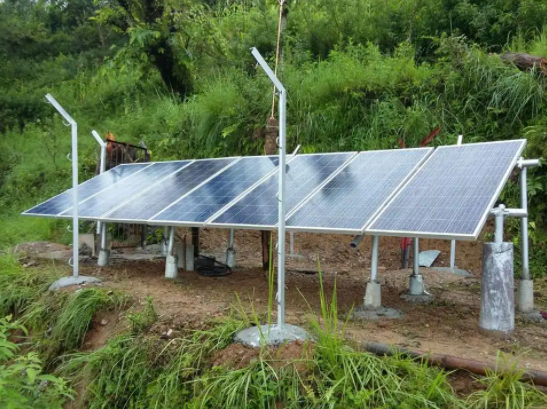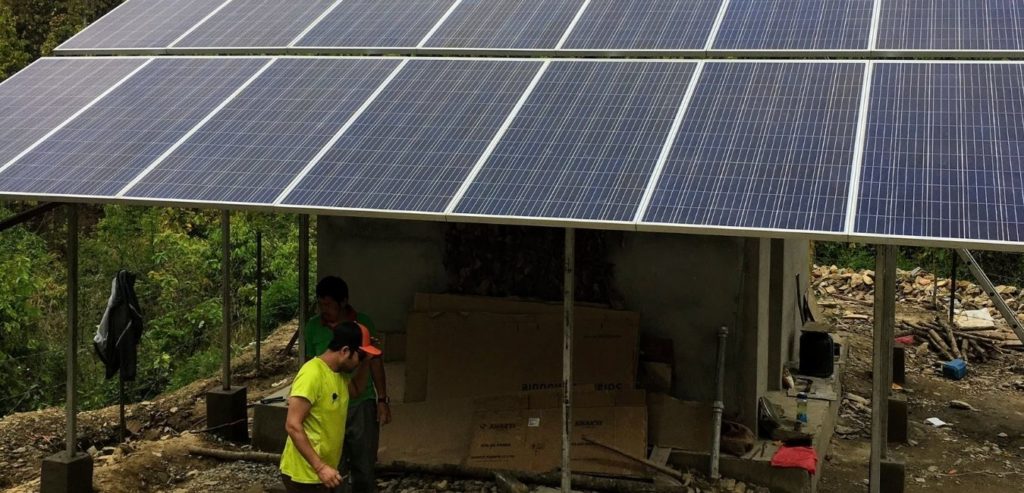Solar Energy Powers Water Pumps In Rural Nepalese Town
Gorkha is a village in Nepal located about halfway between Kathmandu and Pokhara. The village of around 1500 households was hit particularly hard by the earthquake in 2014. The source for the Gorkha water supply is located at the base of the valley approximately 8 km away. Currently, they have (2) 52 HP pumps that are grid-connected to pump the water uphill to the town’s main water distribution center.
Before the earthquake, many households used well water for washing clothes and bathing. Those who did not have a well on their property used the town water supply for bathing and washing. At this time, the water supply was sufficient to provide for the town. After the earthquake, the groundwater level dropped and most of the wells ran dry. The villagers began using the water supply for all of their needs and the supply was no longer sufficient.
The town now requires approximately 900,000 liters of water per day. About 600,000 liters are utilized by the restaurants, hotels, and businesses in town. The remaining 300,000 liters are needed for the villagers which come out to 250 liters per day for the typical household

Image: Solar Water Pump in Nepal built by Sunbridge Nepal
The Problem
Fossil Fuels Can't Provide
The town is only getting about 700,000 liters per day and sometimes often much less. Many times throughout the day there is no water available. The current pumping system relies solely on one single 52 HP pump. The other pump is a backup in case the first fails and the transformer does not provide enough power to run both pumps simultaneously even if they wanted to. Furthermore, Gorkha experiences frequent power outages throughout the day when the pumps become inactive.
I spoke with several local residents including Tej Kumar Rai. He said that usually, they have access to water from the tap for three days and then the water is not available for several days. Sometimes, the water is out for over a week. When this occurs they need to make several trips each day and haul water for their washing and bathing needs. He also mentioned that the residents do not drink the water from the tap. Although there are several filters in place for the water supply the villagers were told it was not suitable for drinking. There are several local taps that are protected water supplies that they use for drinking water consumption.
Fossil Fuels Can't Provide
Solar Powered Pumping Stations
3 solar arrays will be installed at three locations to reliably pump water from the source all the way to the main water distribution center. Each solar array will be 25 kW paired with one 25 HP pump. Under normal conditions, the solar should be able to pump 200,000 liters per day. This should be enough extra water to prevent future shortages. A solar water pumping system of this size has never been tried before in Nepal. The project is being financed through an Asian Development Bank loan and administered by the Nepal Water and Sanitation Authority.
Our partner Sunbridge Solar Nepal has been awarded the project through a public bidding process. The project is anticipated to be completed by June 2017 before the heaviest rains of the monsoons begin.
Construction
75,000 Watts Of Solar Power
A hybrid roof/ground mount will be constructed. The racking system is all fabricated and welded on site. The submersible pump runs on 380V AC power. The pump controller unit takes an input of around 700V DC from the solar array.
Impressions
A Job Well Done
The Sunbridge Solar Nepal crew and its subcontractors are extremely knowledgeable and capable. I was surprised to see how much fabrication and welding is done on site to construct the racking system. In Nepal, all construction happens on a very tight budget and pre-fabricated racking systems are not used. I believe there are some changes in the design to the racking that can be made to construct the system more quickly with less welding required.
Typically, installed costs in Nepal for a public bid project can range between $1.2/W-$2.5/W installed, much lower than in the US. The cost reduction can be realized by using less expensive modules and inverters and fabricating all racking on site.
What's Next for Sunbridge?
Each year, Sunbridge Solar dedicates company resources and employee time to install solar panels for a community in need. By choosing Sunbridge Solar, you are choosing to share the benefits of solar with others!


